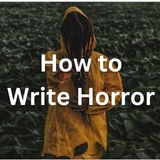Sagging middle....
by Christian
(Montreal)
Hello,
Like everyone else I will start by offering my thanks for the time you put into this site, the explanations and answers you give. I also appreciate how you actually never tell us what to do and give advice and suggestions instead, pointing out that our stories are our own creations and we ultimately always know best where to go with them. Alright now to the subject at hand lol. Sorry if my question is very long but i need to write my thoughts out to formulate my questions correctly. I think I'm writing fantasy by the way.
Simply put I have the story's broad strokes in my head, have a good idea of where I want it to go but am worried about keeping the reader's interest alive between the beginning of the story (where some characters and goals are presented) and the end (where climactic events unfurl.)
I know that before reaching the end of the story where that climactic end is supposed to happen, my characters have to evolve on many levels in order to be appealing to the reader ( and to me) but also believably strong enough to rise to the challenge presented to them. So when I look at that middle problem I'm thinking of presenting sub-stories/ challenges but on a smaller scale.
When I look at the problem it makes me think of Russian dolls.....like the main story is the biggest doll but inside it are many other smaller dolls without which the story becomes shallow.... so my question is :
These smaller dolls, do they always, systematically have to relate to the or be linked to the bigger one (the main story). As long as I write a chapter that helps the reader understand the character better, either through tragedy, romance, humour, etc. can i more or less "take a break" of sorts from the main intrigue of the story? Or should every single smaller scale story be a clue to the main story ?
My worry is that the reader might think <
Answer: First, thanks for the kind comments. I'm glad you're finding this site useful.
As for your question...
There are two basic types approaches to plotting stories outlined in Dramatica.
The first, which is more plot-oriented, is based on a four-act structure. You have four throughlines: your overall story, your main character's arc, the impact character's arc, and the relationship arc. Each of these is divided into four stages or signposts - the set-up, complication, crisis, and resolution. Act one contains the first signpost of each throughline, act two the second signposts, etc.
In a longer work, these signposts are broken down into sequences of events, so that each
Even though this approach includes the external, internal, and relationship conflicts, it is a very plot-oriented approach because each event in a throughline leads into the next in a very tight cause-and-effect chain.
The other way to structure a story is to take a theme-oriented approach, which is generally a three-act structure. With this method, the signposts are reduced to single events. The bulk of the story consists of the journeys from one signpost to the next. Act one is the journey from the signpost #1s to the signpost #2s. Act 2 journeys from the signpost #2s to the signpost #3s, etc. And these journeys are explorations of themes.
For example, you might take two opposing values you want to weigh up, such as self-confidence vs self-doubt.
Then you take two opposite ways of looking at these values, such as objective value vs. subjective worth.
Next you create 6 sequences, one to illustrate each of the following questions:
1. Which is better: self-confidence or self-doubt?
2. What is the objective value of self-confidence?
3. What is the subjective worth of self-confidence?
4. What is the objective value of self-doubt?
5. What is the subjective worth of self-doubt?
6. Which is more important, objective value or subjective worth?
Each of these 6 questions can be explored in a sequence of 3 or 4 events. You put two theme sequences into each act.
Each throughline will have its own issue and counterpoint to explore, so that gives you 8 sequences in each of the three acts.
This is a theme-oriented approach because the sequences are related to each other in that they are exploring related issues, but they are not linked to each other by cause and effect. The signposts and other plot elements are still present, so there is a plot, but there is less emphasis on it.
My feeling is that theme-based plotting is best for decision stories, such as literary fiction or romance. Stories where the turning points are key decisions require more weighing up of issues in order to make those decisions, so thematic sequences are more important.
Plot-based plotting is best for action stories such as crime, war, or adventure where the challenge lies in the doing not the deciding.
Of course, it depends too on your audience. There are holistic thinkers and there are linear thinkers (or as the philosopher Alan Watts used to say, there are pointy people and gooey people). Holistic people lean towards decision stories and linear people lean towards plot and both have a hard time understanding the other's preferences.
I hope that doesn't complicate things too much. The danger with theory is that the more complicated it gets, the more it slows you down. It's best to just take the parts that spur you to action and not worry about the rest.
Comments for Sagging middle....
|
||
|
||
- Home
- Plot Questions
- Sagging middle....










